
Although Japan is famed for savory ramen or freshly-caught sushi, its desserts are a lesser known part of its culinary world.
And we’re not just talking about your typical chocolate bars, ice cream or cake either (Japan has some great ones though), we’re talking about traditional Japanese dessert or wagashi.
So what are wagashi?
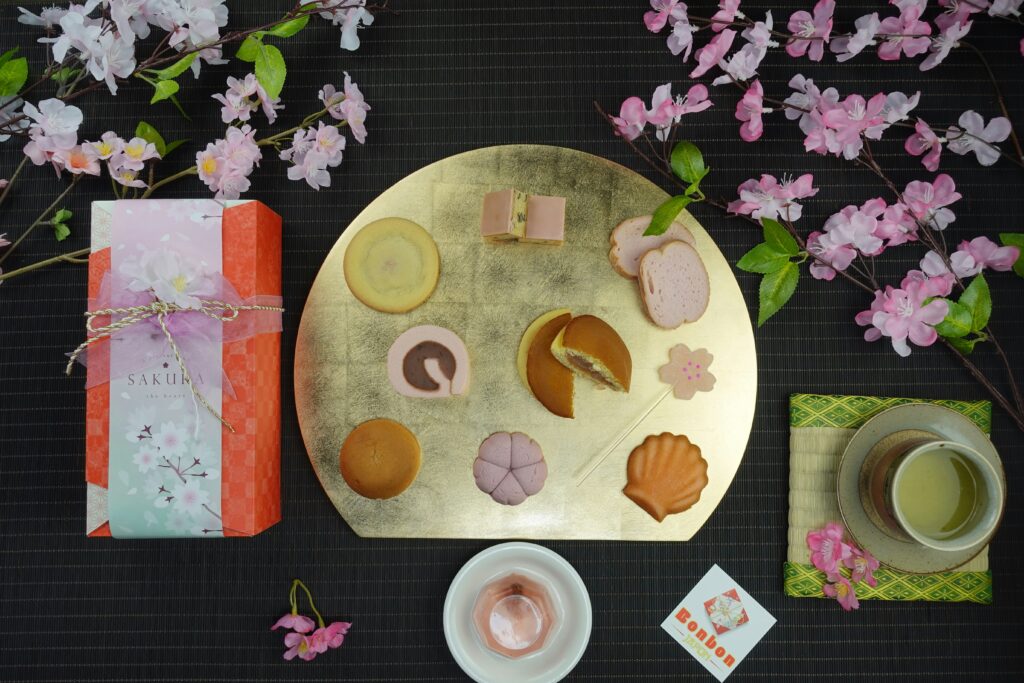
Wagashi generally refers to traditional desserts that originate from Japan before the arrival of Western desserts (with a few exceptions like castella).
With humble origins as dango, a plain rice flour dumping, wagashi has grown to encompass an entire constellation of desserts, from the colourfully diverse nerikiri to the reliable pancake-shaped dorayaki. Originally taken during tea ceremonies to complement bitter teas, they have since become a confection enjoyed as dessert or on their own.

Although vaguely defined and hard to pin down, wagashi typically emphasize vivid colors, pleasing shapes and seasonality, all depicted with natural vegetable ingredients such as rice flour, bean paste and sugar. They can also be further broken down into different varieties depending on moisture content and preparation methods.
So, what are the must-try wagashi out there? Let’s find out:
Nerikiri
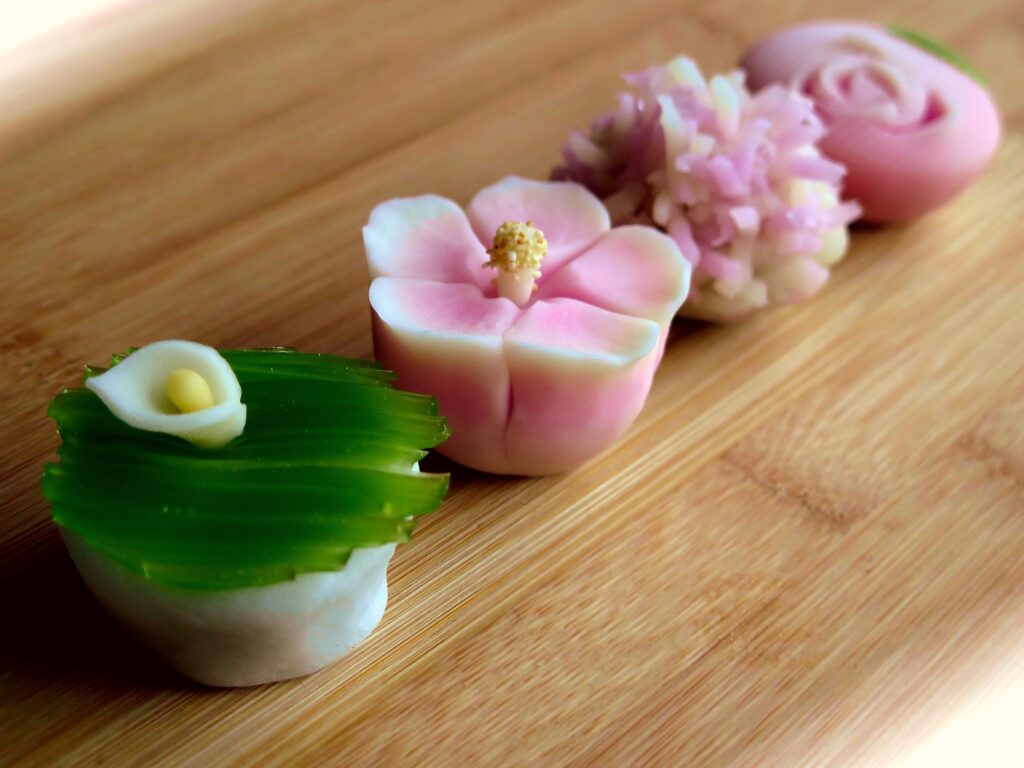
A testament to imagination and creativity, nerikiri are made from white kidney bean mixed with various ingredients before finally being wrapped in dough. Sounds simple enough, but what truly makes it shine is how the dough is shaped.
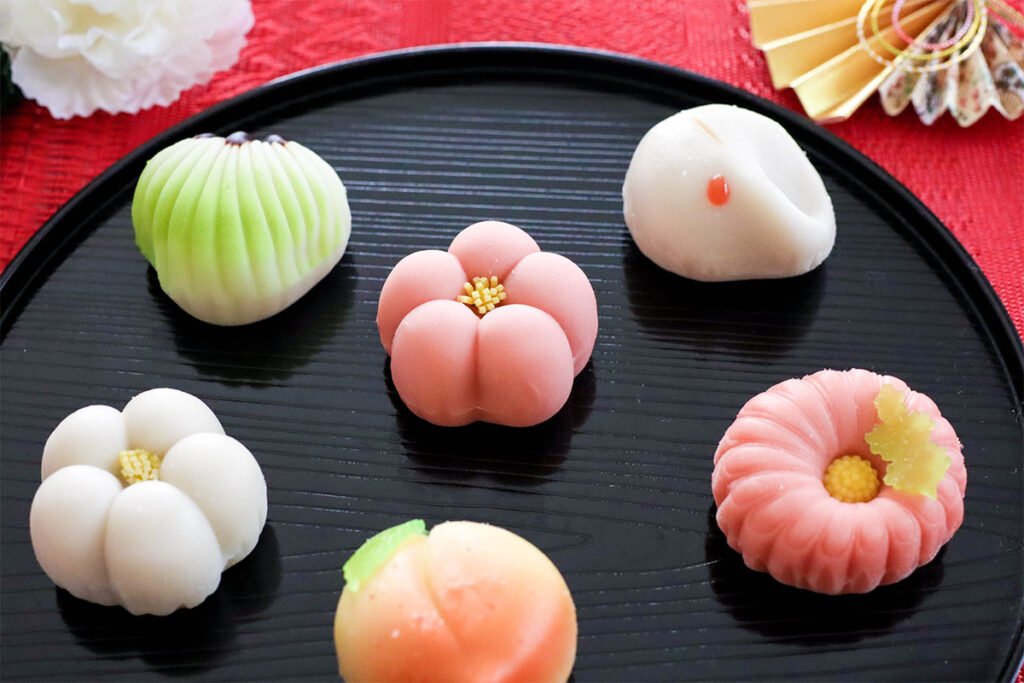
Pink cherry blossoms, cooling paper fans, fiery-red maple leaves and pretty snowflakes – nerikiri depict the changing seasons on such a tiny canvas using vivid, colourful seasonal scenes or objects.
But why stop at seasons? Animals, mascot characters or even just pleasing shapes are fair game when it comes to nerikiri.
Better yet, it’s an extremely light, healthy dessert with only a mild sweetness, making it perfect for tea ceremonies that feature strong, bitter green teas.
Yokan
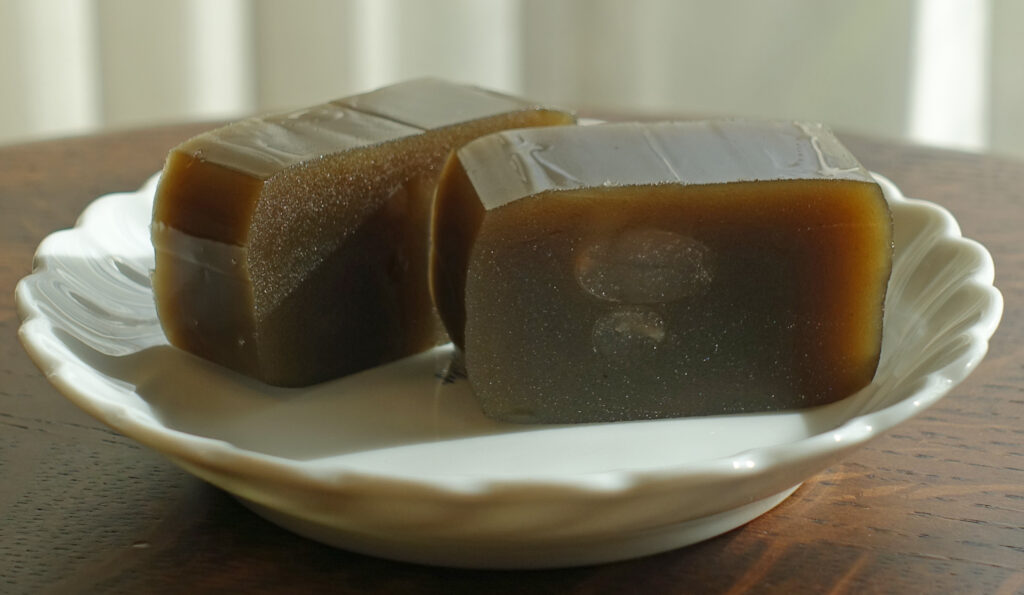
Yokan are jelly blocks that may look simple but are actually vessels of endless variety.
Originating from a meat broth dish brought over from China by Japanese monks, the meat was eventually replaced with sweet azuki bean paste to fit the monks’ vegetarian diet.

After centuries of evolution, yokan is now mainly made with agar added to azuki red bean paste to form a simple jelly, though other pastes made from white kidney beans, green tea or even persimmon are easily found. Recently, you can even find more adventurous ingredients such as cheese or even coconut in yokan!
Though your classic yokan is a block of uniform green, brown or black, yokan with colourful fillings of fruit, candy or other bean pastes are also widely available.
Castella
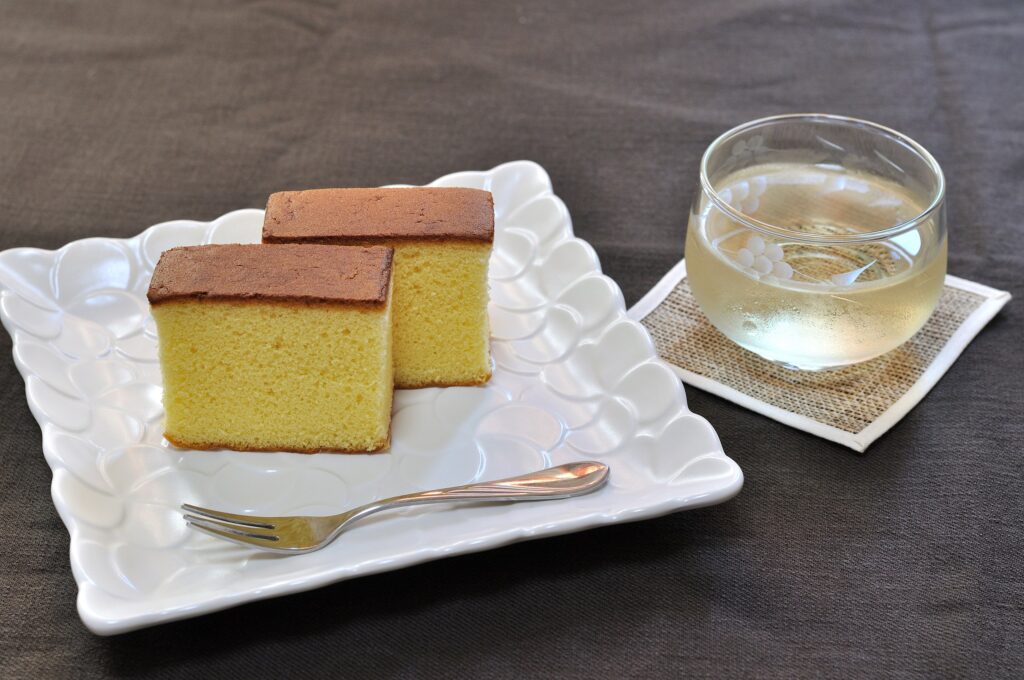
You could probably tell from the name, but castella has a fascinating origin far beyond Japanese shores.
First introduced by Portuguese traders as “Pão de Castille” or “bread from Castille”, castella is a soft, golden sponge cake encased with a brown crust.
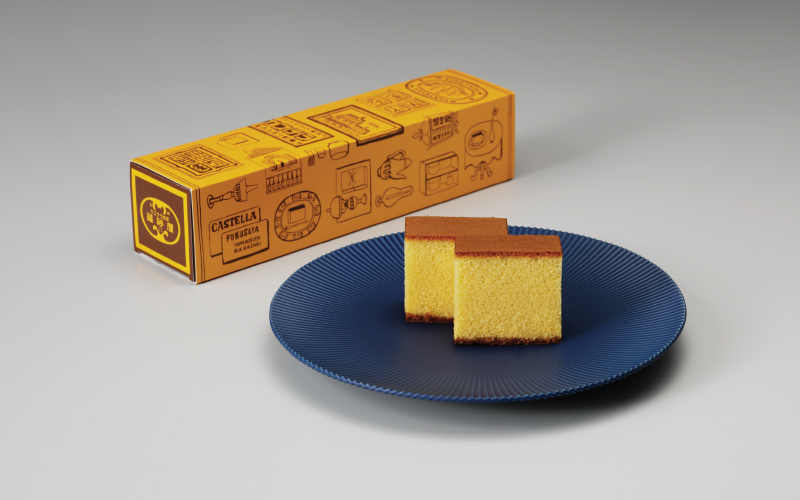
Due to Japan’s isolationist policies during the Edo period, the Portuguese could only trade with the port city of Nagasaki, which is where they shared this cake. Today, castella is a renowned local specialty in Nagasaki and is famed for its crunchy bottom crust – the result of sugar crystals settling at the bottom.
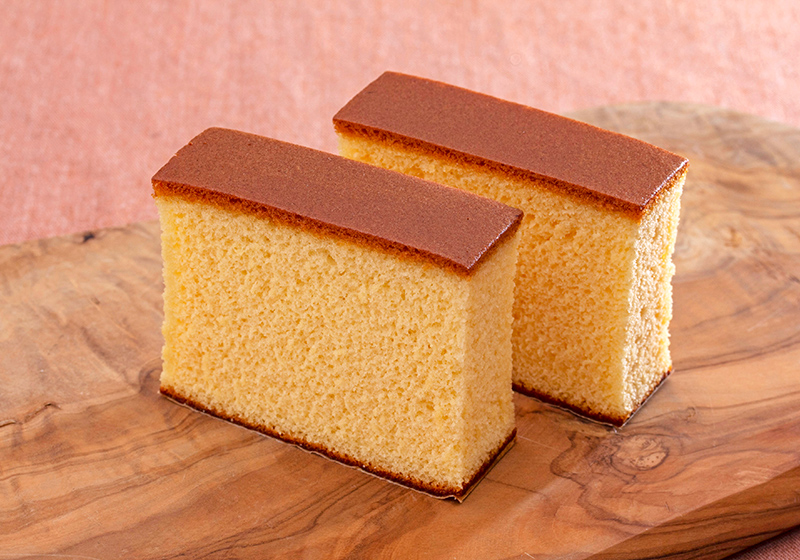
Compared to the Portuguese version, the Japanese use butter instead of sugar due to sugar’s historical scarcity in Japan, giving it a more mellow sweetness. Castella is also sold in large rectangular blocks compared to the cake-shaped Portuguese version.
Dorayaki
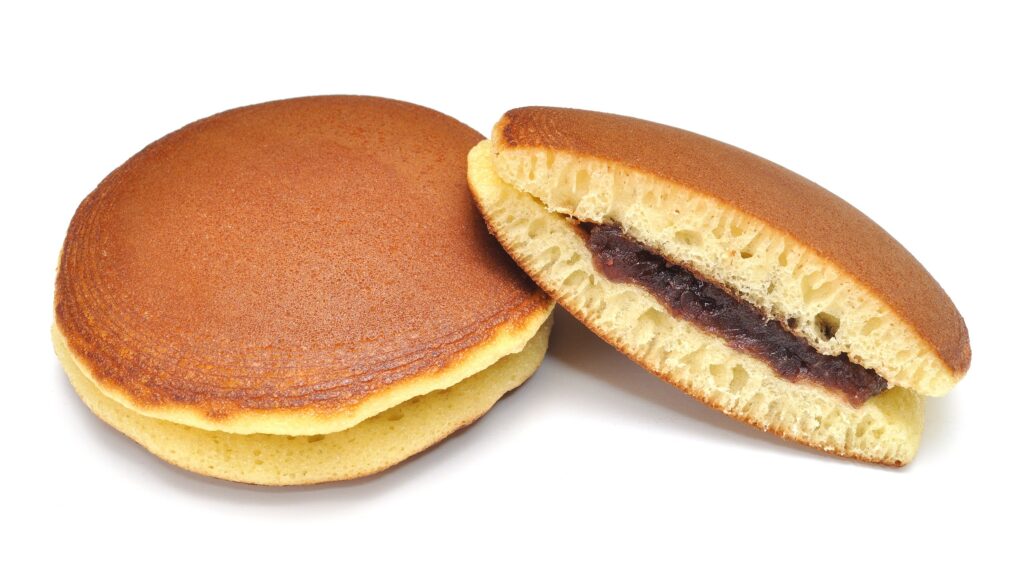
For castella addicts, dorayaki offers you a twist on the golden cakes-this time in pancake form!
Comprised of dora (gong) and yaki (frying), legend has it that the legendary warrior monk Benkei left his gong in a peasant’s house, which was then used to fry up the very first dorayaki!
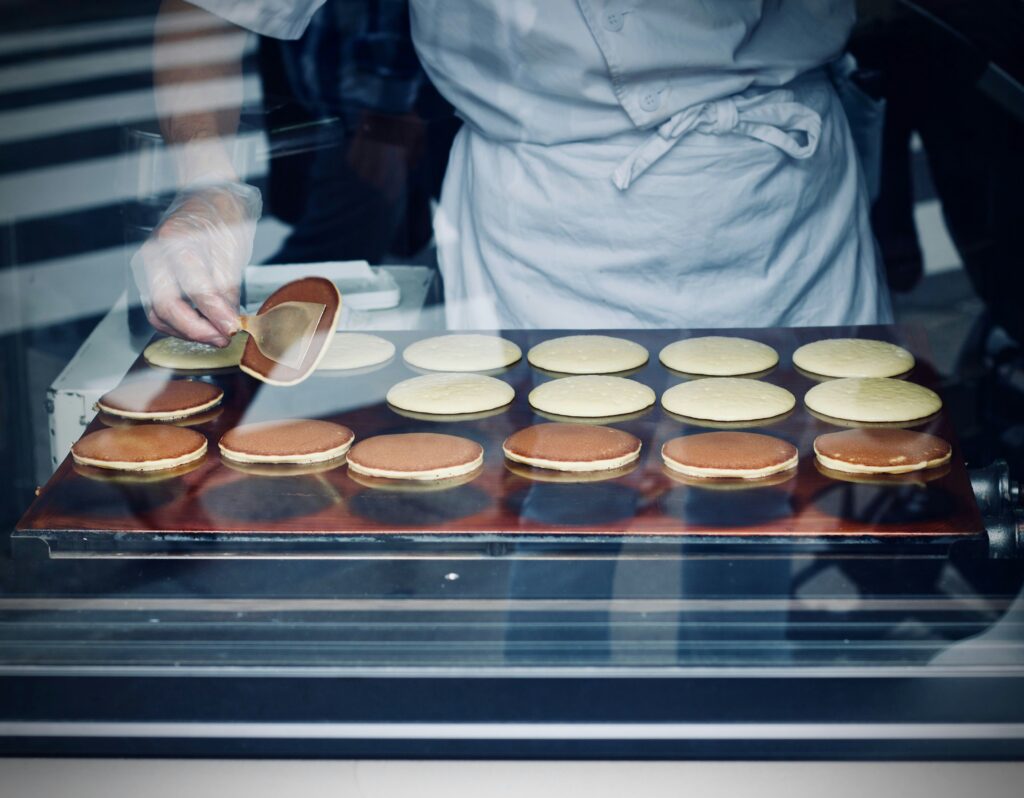
Filled with sweet azuki bean paste (sensing a theme yet?), they are handy palm-sized pancakes that can be eaten with one hand, making them a better to-go food than traditional castella.
Manju

Return to basics with the humble manju, a white wheat dough bun wrapped around a sweet red bean filling (other colors and beans are more than welcome though).
Originally a soup dish brought over from China, it was tweaked to suit Japanese tastes, making it the perfect light snack.
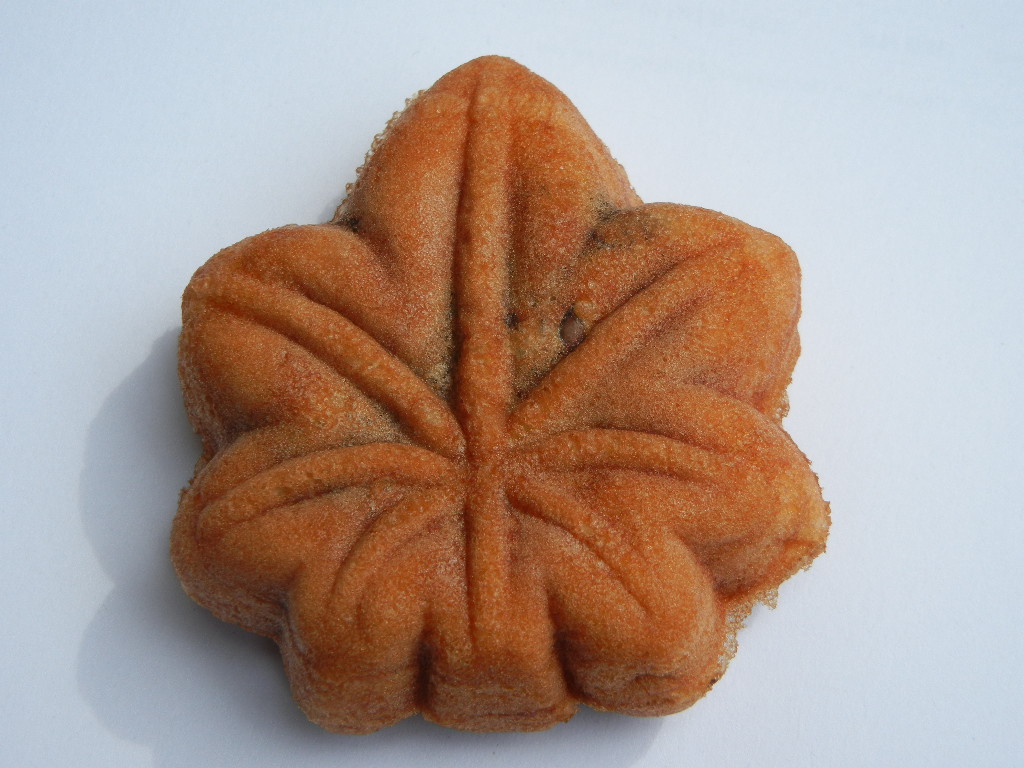
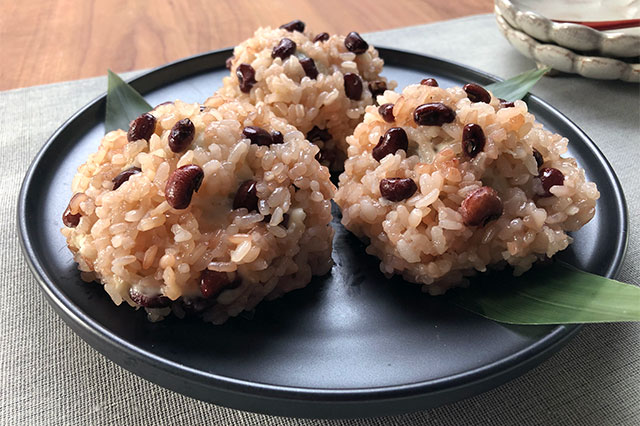
Regional varieties of manju are also common in Japan, such as the momiji manju of Hiroshima with its baked brown crust shaped like a maple leaf. There’s also the iga manju and its red rice and chestnut-encrusted bun, which supposedly tastes sweet and sour.
Dango
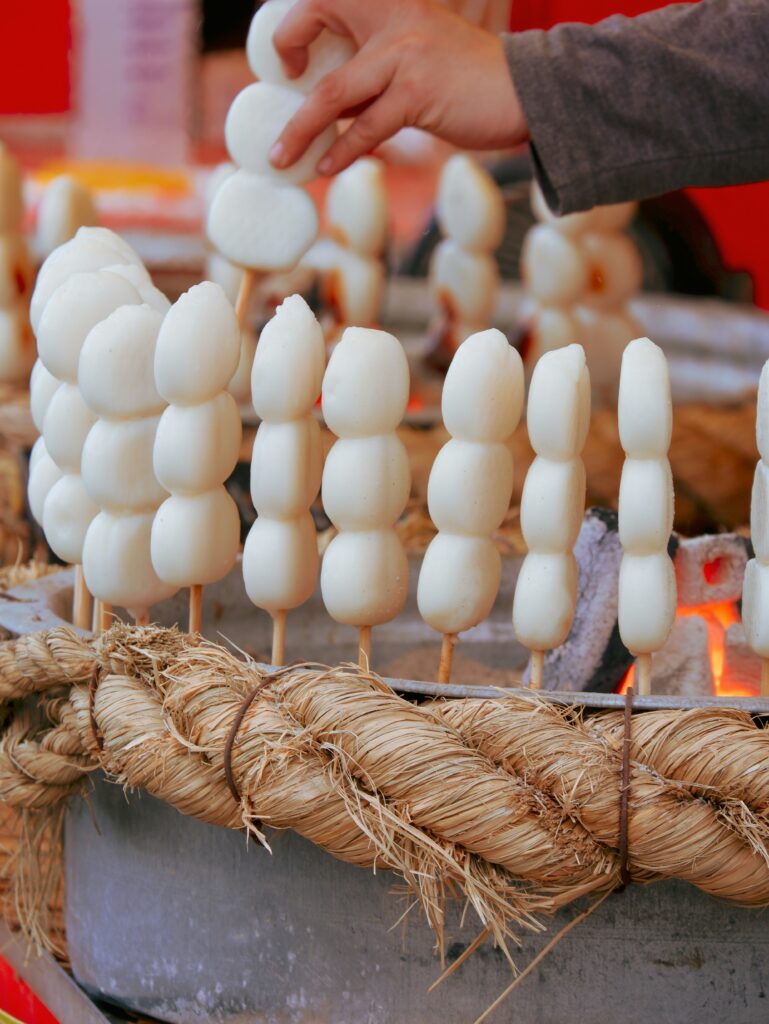
Dango are tiny little round rice cakes made from a blend of uruchi rice and glutinous rice flour that is steamed or grilled.
Served in threes or fives in bowls or skewers, they can come in a variety of colors, though white, round balls are the most common.

Enjoying dango plain is good and all, but why not live a little and enjoy various sauces with it? There’s mitarashi dango, which includes a sauce made from soy sauce, sugar and starch. Other condiments include black sesame sauce, soy sauce and, as always, anko red bean paste.
Taiyaki
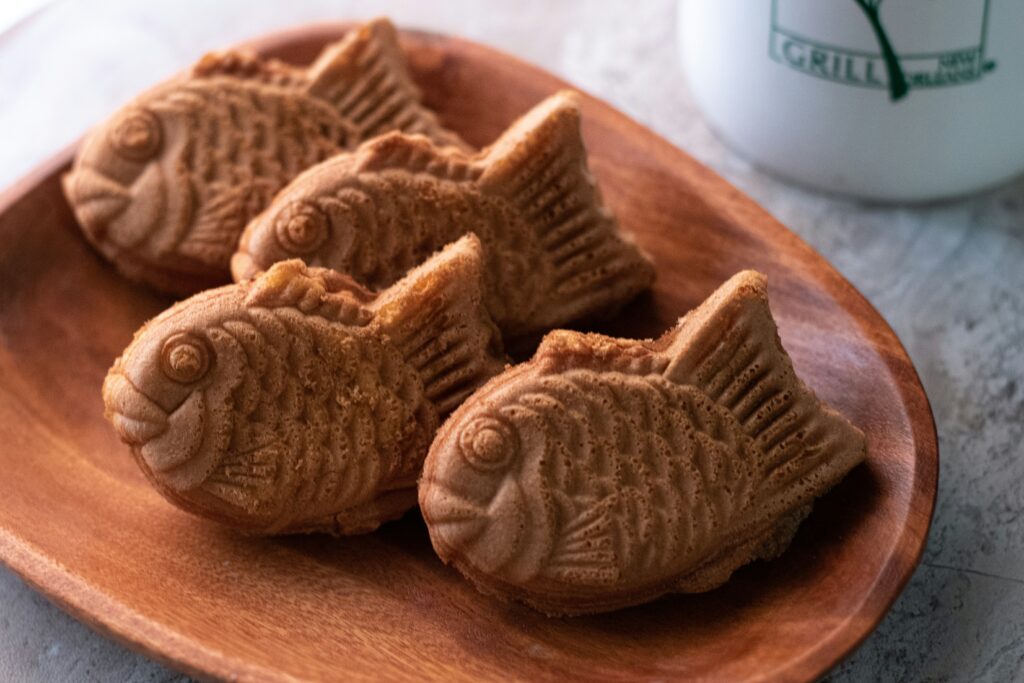
A reimagining of another existing wagashi called imagawayaki (a stuffed cake-like pancake), taiyaki are fish-shaped pastries filled with anko paste or wilder fillings like ice cream, chocolate or custard.
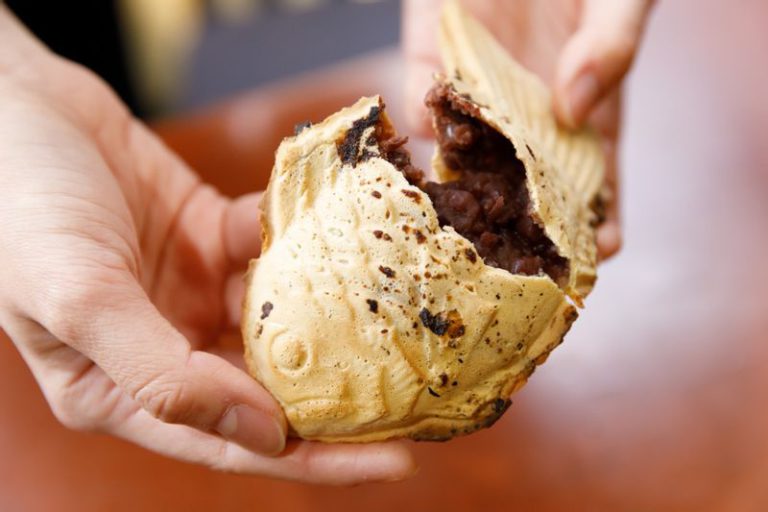
Supposedly invented in 1909 by imagawayaki-seller Seijiro Kobe to revive flagging sales, this fishy-shaped dessert has since taken Japan by storm. As “tai” or “sea bream” was an expensive fish for the time and a symbol of luck and fortune, it was probably chosen to evoke feelings of luxury and fortune. Or maybe it just looked cute!
Mochi
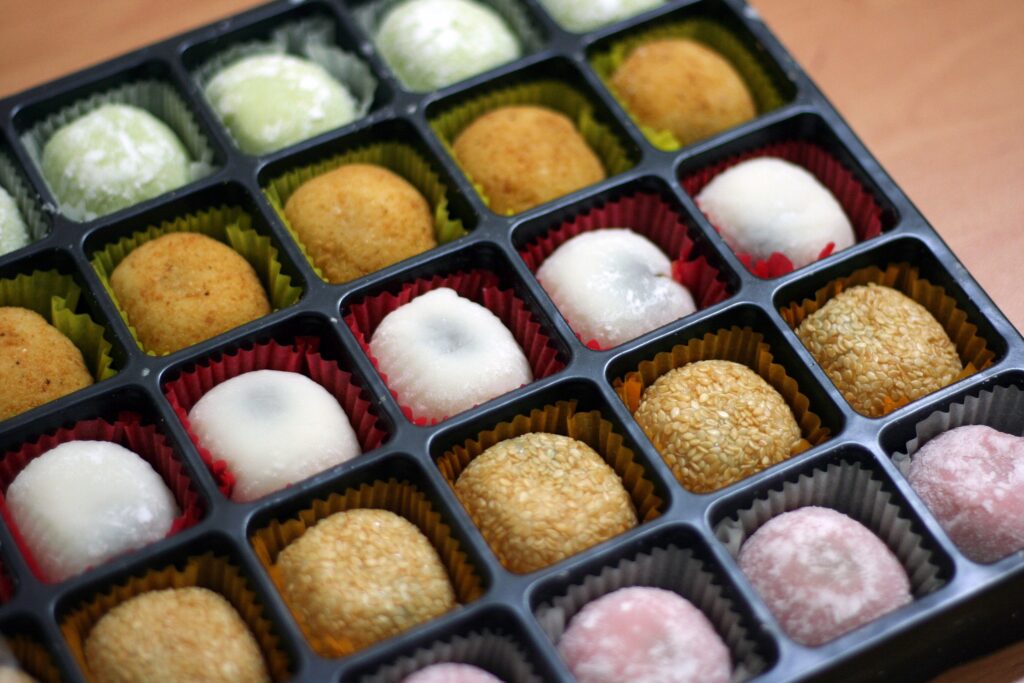
Considered one of the earliest processed Japanese foods, mochi is a refreshing take on desserts that are often all-too sweet.
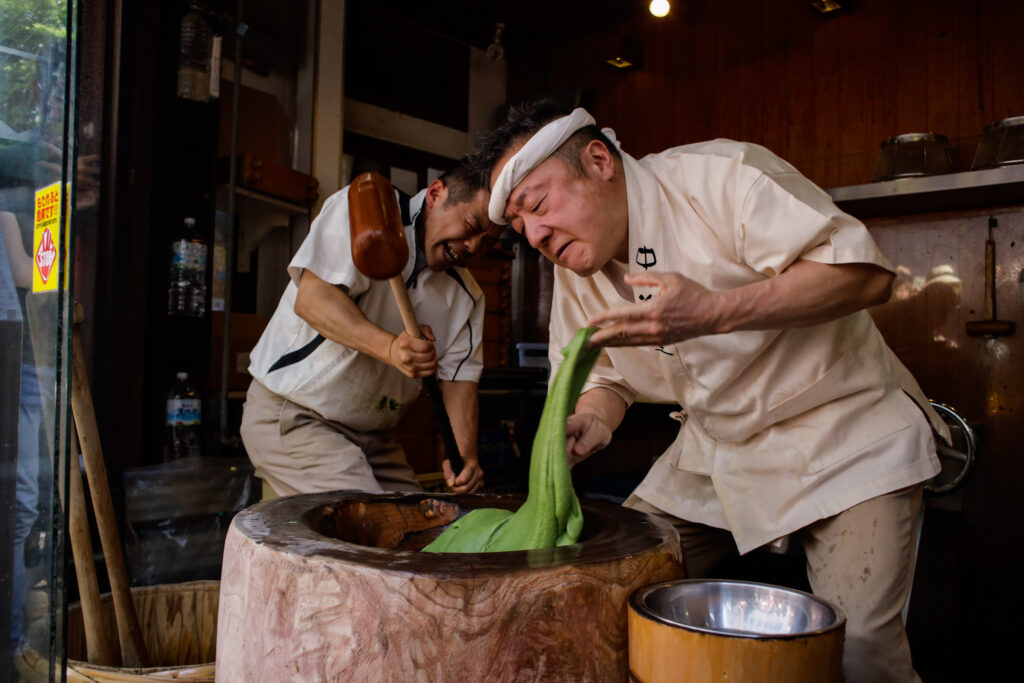
Traditionally, this rice cake is made in a spine-tingling dance between two people, whereby one person will turn and wet a glutinous rice paste before the other pounds it with a large wooden mallet, both repeated in quick succession. Try not to flinch or lose focus!
The result of this exercise is a chewy rice cake that’s only mildly sweet with only natural sugars in the rice, making it a great palette cleanser.
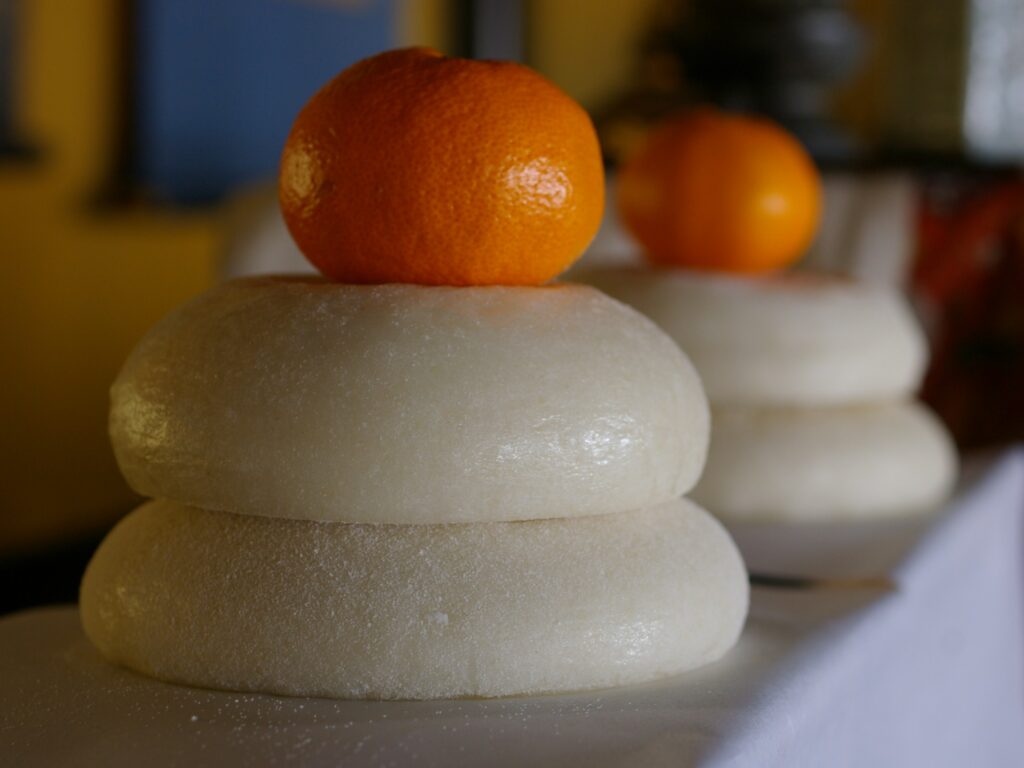
Kagamimochi or “mirror mochi” is a New Year decoration consist of two mochi topped by a persimmon orange.
Besides being a lovely light dessert, mochi also has religious and cultural significance, being used as an offering to the gods or placed as seasonal decoration.
Daifuku are a variant of mochi that basically has anko filling, a satisfying choice for those with a sweet tooth.
Shiruko
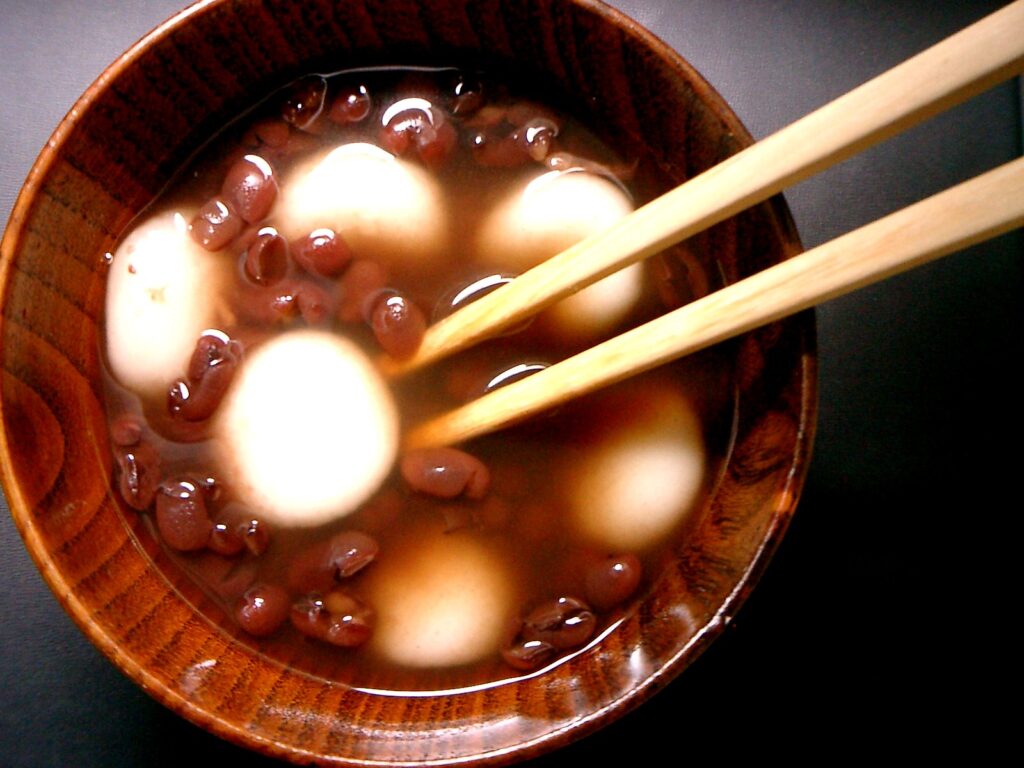
One of the rare wagashi that is actually a soup, shiruko is azuki red bean paste again, but in soup form.
As with most wagashi, there are wild variations in soup or paste thickness, amount of azuki beans and added ingredients such as chestnuts and mochi.
And depending on whether you’re in the Kansai or Kanto region, shiruko and its close cousin zenzai can mean totally different dishes!

In Kansai, shiruko uses smooth azuki paste while zenzai uses thick azuki paste in soups; in Kanto, both of these are simply called shiruko (inakashiruko for smooth or gozenshiruko for thick), with zenzai being reserved for extremely thick azuki paste with little moisture.
Frequently enjoyed as a winter pick-me-up food during the coldest months of the year, they even come in cans sold in Japanese vending machines!
Amezaiku
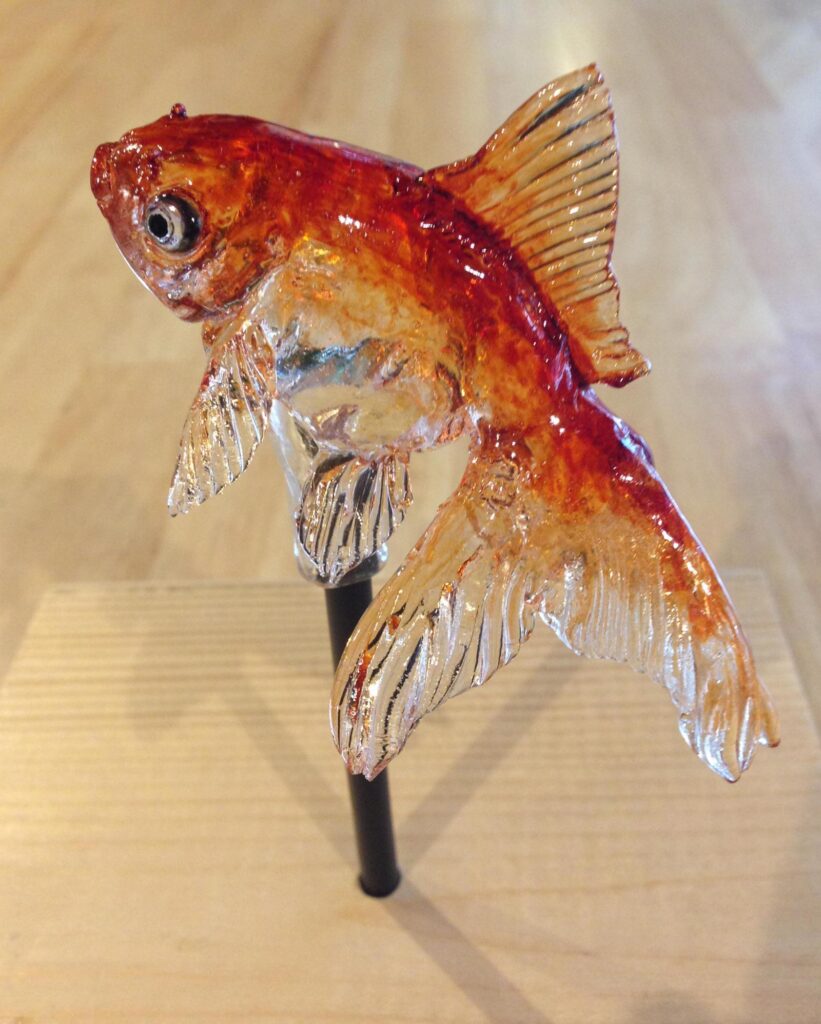
Stradding the fine line between cuisine and work of art, amezaiku or “candy art” are masterpieces that offer you a little extra eye candy before your dessert!
Born from street vendors crafting colourful animals with scalding hot molten starch or rice syrup, amezaiku has grown more complex and intricate as new technologies enable glass-like transparency and vivid colors. Subjects have grown to include mascots and cartoon characters as well.

Beauty, cuteness, fragility and sweetness – amezaiku are a sweet reminder of these common wagashi themes.
However, since they’re made from pure sugar, make sure to enjoy them in moderation!
Still looking for more after your wagashi dessert? Then try out our guide to the best Hong Kong foods out there or our must-try alcohol from the world if you’re looking to get tipsy.

